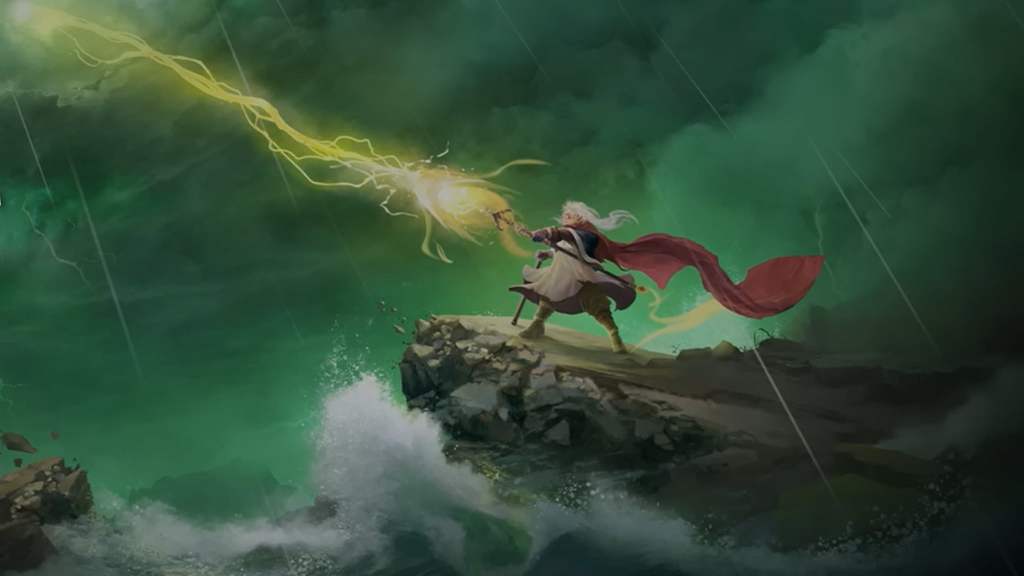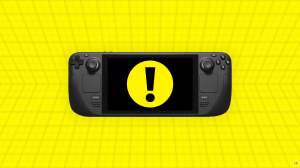Critical Role has become a powerhouse in the Dungeons & Dragons community. What started out as a simple game between friends eventually turned into a streamed game which then snowballed into a massive media company shaping the future of role-playing games. A major step for Critical Role is Daggerheart, a TTRPG handcrafted by Critical Role dungeon master Matthew Mercer and Darrington Press, a board game and card game imprint under the company. The May 20th launch date is quickly approaching with pre-orders still live, and as part of the build-up to the launch, more and more of Daggerheart is being shown off such as the game’s new Domain system.
Videos by ComicBook.com
ComicBook has the exclusive pleasure of sharing a preview of Daggerheart’s Domains and accompanying Domain Cards. The beautifully designed artwork and clean, concise information make learning about Domains and their importance crystal clear. While Daggerheart certainly has many similarities with Dungeons & Dragons, Critical Role is aiming to differentiate itself, and Domains are one aspect of this change.
In Daggerherat, Domains offers players a deck of Domain cards, each containing abilities, spells, and more that players can use during their adventures. There are a total of nine Domains, and each of Daggerheart’s nine classes draws from two of these Domains. While your class determines your starting attributes, it’s the Domains that determine how your character grows in Daggerheart.
Domain Cards From Character Creation to Level Up

RELATED: 7 Classes I Can’t Wait to Play in Daggerheart
When crafting a character in Daggerheart, players select two Domain Cards from their classes’ respective Domains. Both cards can be from the same Domain, or players may opt to take one from both Domains. For example, a Warrior uses the Blade and Bone Domains, meaning this player can take a Domain Card from both Blade and Bone or two Domain Cards from one of these. Likewise, the Druid pulls from the Arcana and Sage Domains, meaning their cards will be Arcana, Sage, or both.
As players level up, they will select new increasingly powerful Domain Cards from their Domain Decks that match their level. This can be from any of the player’s Domains and may be a spell, feature, or ability. Some will require the player to take on a Stress, give the GM a token or Fear, or have specific requirements to trigger the ability. Depending on the power of the Domain Card, players may have to make a sacrifice to use it.
The number of Domain Cards increases as players level up, making their characters more powerful in battle and customized in playstyle. Each level sees players earn a new Domain Card, though only five cards can be slotted at one time. Players will need to adjust their active Domain Cards for what they think lies ahead of them, much like spellcasters need to prepare spells in Dungeons & Dragons.
RELATED: 10 Ancestries I Can’t Wait to Try in Daggerheart
Daggerheart’s Domains Are a Game Changer
What makes Domain Cards special is how flexible they are for creating unique characters. Classes can play wildly differently depending on a player’s Domain Card choices. Some cards provide abilities to deal damage while others can support allies. What abilities and spells are available depend on the Domain as each one offers a theme or avenue of play such as some focusing on single powerful effects or multiple smaller effects.
Arcana is a magical Domain that refers to a natural elemental magic used by classes like the Druid and Sorcerer, for example. What it lacks in casting flexibility, it makes up for in its board options and utility through a single effect. On the other hand, Codex refers to a more studious magic, seen in Wizards or Bards. While not overly powerful, these spells provide great flexibility by offering multiple effects from one card.
In this way, Domains shape how a player plays but are completely customizable. Daggerheart focuses on narrative and cooperation, so layers should coordinate their Domain Card choices with their party. Some players will naturally favor offense, while others prefer support. Other cards even grant passive effects that are active as long as you hold the card. Making smart choices for Domain Cards allows the party to be more successful and leads to a more engaging story.
This customization is further expanded by the ability to multiclass. At later levels, players have the option to take on a second class, thus gaining access to that class’s Domains. Upon multiclassing, players now have additional Domains from which they can pull Domain Cards. Mixing and matching classes allows for unique combinations of Domains and strategies.

Daggerheart features 189 Domain Cards in the Daggerheart Core Set, meaning players can expect roughly 20 cards per Domain. Darrington Press will no doubt expand this number with post-launch expansions, possibly adding new classes and Domains, but for now, that’s what players can expect at launch. Domains are at the heart of Daggerheart’s character creation, and the options may be overwhelming at first. Fortunately, the physical cards make it easy to keep track of these abilities and manage options in combat and role-playing situations.
May 20th marks Daggerheart’s official release, and Darrington Press is hosting launch parties at select locations across the country around that day. Physical orders can be pre-ordered and numerous gameshops will have stock available to purchase as well. Critical Role will likely also ramp up their Daggerheart presence on YouTube and Twitch to build up hype and offer insight into the upcoming TTRPG.









